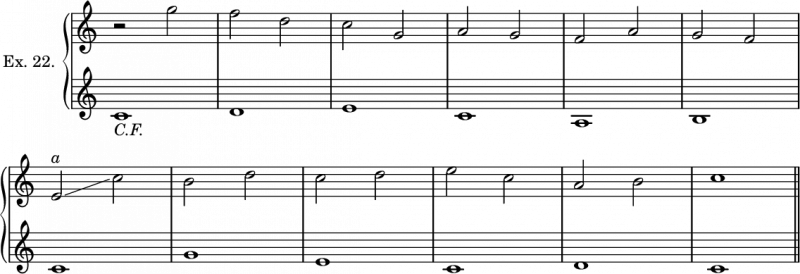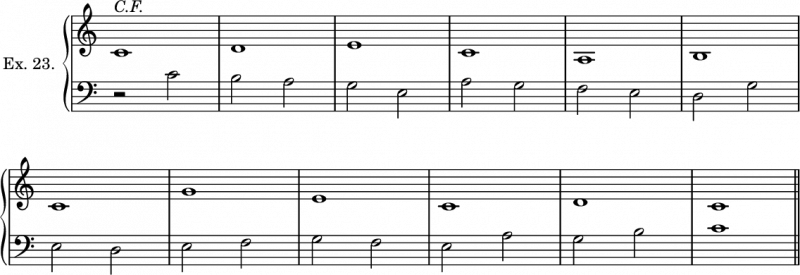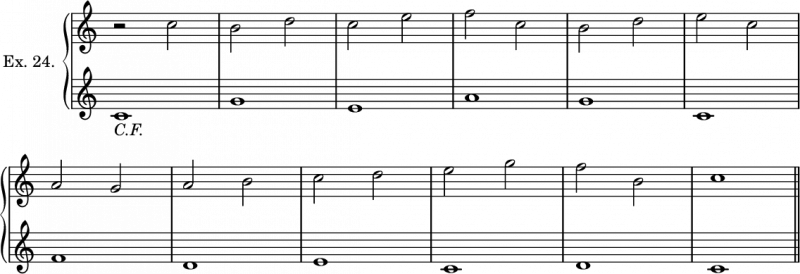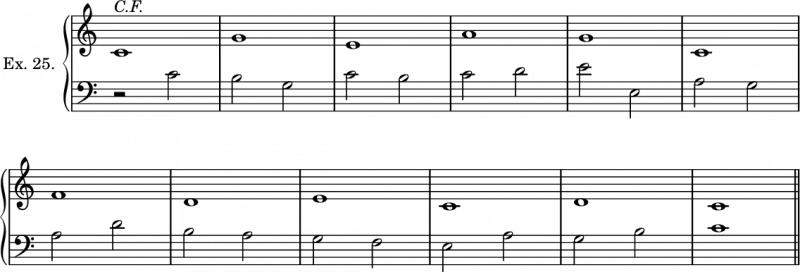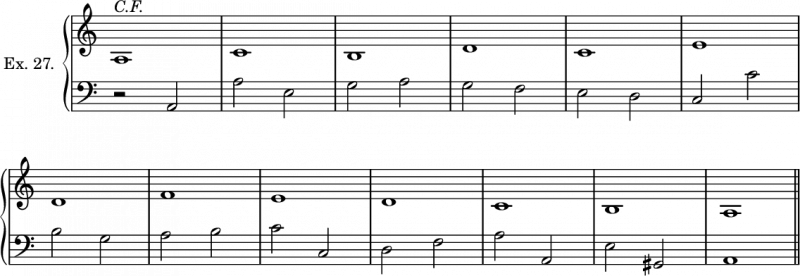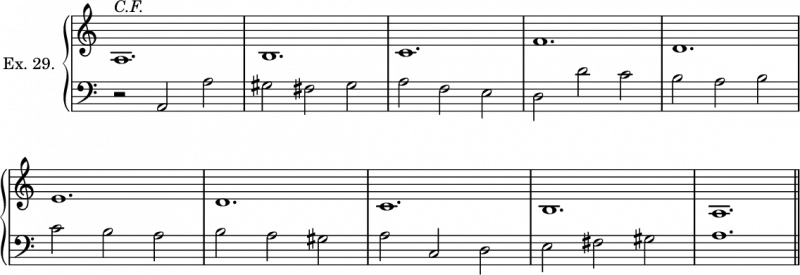This is an old revision of the document!
Counterpoint (Bridge): Chapter 2
Second Species in Two Parts
Two Notes to One
Rules 1-5
Two notes are here written in the counterpoint to every note of the cantus firmus, with the exception of the first and last. The counterpoint usually begins on the second beat of the first bar, being preceded by a half-bar's rest. In the last bar the counterpoint has a note of equal value with the cantus firmus.
The first note of the counterpoint must be a perfect concord 1), and the first note of every following bar either a perfect or imperfect concord.
The second note in each bar may be a concord or a discord. If the latter (which is advisable), we must move to and from it by conjunct degrees, i.e. without skip, it being merely a passing note from concord to concord.
Occasionally in the carrying out of a sequence, or to secure a flowing counterpoint, a discord may appear at the first part of a bar. In such a case (which should be rare) the notes immediately preceding and following the said discord should be consonant.
The immediate repetition of a note is forbidden in this and all species except the first (note against note).
Rules 6-10
The unison is still to be avoided except at the first and last bars, though it may be used occasionally at the second part of the bar.
Similar perfect concords (i.e. two fifths or octaves) on the accented beats of successive bars should not be used, the effect of consecutives being too apparent 2). Even on successive unaccented beats the use of these combinations is not recommended. Some authors permit the former if the inter mediate notes are taken by a skip greater than a third, and the latter if the notes in question have the character of passing notes, but it is seldom possible to entirely obviate the bad effect of consecutives 3).
The parts may occasionally cross at the unaccented part of the bar in this and the other species of counterpoint yet to be explained.
The following are the cadences when the cantus firmus falls to the final by a whole tone:
The cadence at Ex. 21, c, involves a skip of a diminished fifth, and is not so frequently used as those at a and b. If the cantus firmus approaches the final from some other note than the supertonic (see Ex. 9 4)) a suitable cadence will of course have to be made.
In this and the following species the student will do well to avoid three successive skips, even of a third, in the same direction; and the frequent use of the three notes of a triad in succession, without change of harmony, is not recommended.
Musical Examples
In triple time this species has three notes to one, the cantus firmus being dotted. The second and third notes in each bar may be either consonant or dissonant.
Observations on Examples 22-29
Wide skips are avoided, even the minor sixth being seldom used. At a in Ex. 22 it is rendered necessary by the leap of a fifth in the cantus firmus. The skip of an octave (see Ex. 27 and 29) is not only unobjectionable but frequently gives great vigour to the counterpoint.
Ex. 28 and 29 are specimens of this species with three notes to one.

